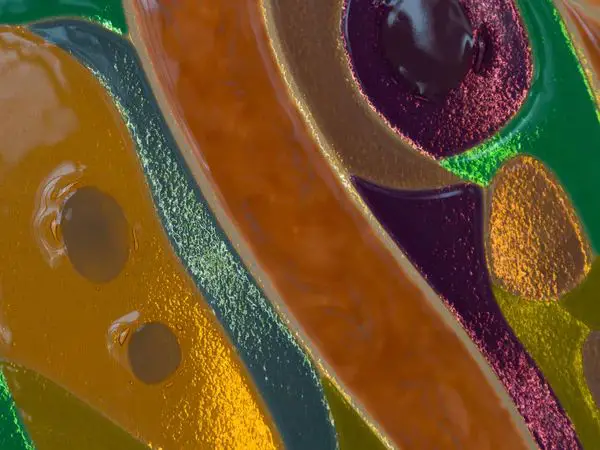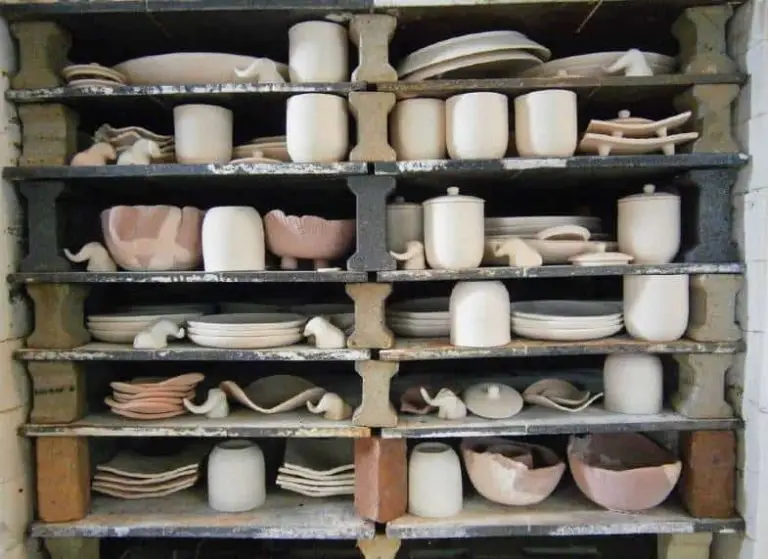What Is The Best Clay For Modeling?
Modeling clay has long been a popular creative material for artists, crafters, and children. The word “clay” refers to any natural, earthy material that can be molded when wet, then hardened when dried or fired. Modeling clays specifically are clays designed to air dry at room temperature, rather than requiring firing in a kiln. These clays allow for spontaneous, intuitive sculpting and shaping. Once dry, modeling clay creations retain their shape, often with a finished look and feel of ceramic or stone.
Modeling clays are used in a variety of applications. Sculptors and crafters use them to create decorative items like vases, bowls, beads, and figurines. Jewelry makers shape modeling clay into wearable art like pendants and beads. Kids enjoy molding and shapingmodeling clay as an open-ended creative material. There are many types of modeling clay to suit different uses and skill levels. Oil-based, water-based, air-dry, polymer, and natural earthen modeling clays each have unique properties.
Properties of Modeling Clay
Modeling clay is available in many types, each with their own properties that make them suitable for different applications. Some of the most important properties to consider are pliability, workability, and dry time.
Pliability refers to how soft and malleable the clay is. Highly pliable clay is flexible and easy to shape and sculpt. Oil-based clays like plasticine tend to be very pliable. Workability describes how easy the clay is to handle and form into detailed shapes without sticking or cracking. Clays like polymer clay with added fillers and plasticizers have excellent workability. Finally, dry time is how long the clay takes to harden after shaping. Earthen clays require firing in a kiln to fully harden. Air-dry clays cure at room temperature in 1-7 days. Polymer clays can be hardened in a home oven 1.
Understanding these key properties helps choose the right modeling clay for the project, whether rigid detailed sculptures, reusable play clay, or jewelry pieces requiring a durable finish.
Oil-based vs Water-based Clay
Oil-based clay and water-based clay are the two main types of modeling clay. Each has its own advantages and disadvantages.
Oil-based clay, such as plasticine or plastilina, is made from a non-drying petroleum oil mixed with fillers like clay and wax. The main benefits of oil-based clays are that they are very malleable and smooth, do not dry out or harden, and can be continually reused. The downsides are that they are messier due to residue left on hands, stain more easily, and models cannot be hardened without special sealants. Oil-based clays also have a distinct odor.
Water-based clays use water as a binding agent instead of oil. They are cleaner and have less odor compared to oil-based clays. Water-based clays are also more economical. The tradeoffs are that they dry out quicker and are more prone to cracking and crumbling as they dry. Models made from water-based clay need to be sealed to prevent deterioration over time. They are also not as smooth and pliable initially compared to oil-based clays.
Polymer Clay
Polymer clay is a type of modeling clay that cures when baked in a regular home oven. It is made from PVC resin mixed with plasticizers and color pigments. Some key advantages of polymer clay are:
- It doesn’t dry out when exposed to air like other clays.
- It can be reused since it doesn’t harden until baked.
- It produces bright, durable models.
- A wide variety of colors and finishes are available.
Some disadvantages are that polymer clay can be more expensive than other types of clay and produces fumes when baked. Brands of polymer clay include Sculpey, Fimo, Premo, Cernit, and Kato Polyclay. Sculpey is an affordable polymer clay that comes in over 60 colors and is easy to condition and blend. Fimo clay offers a smooth texture and vivid colors but can be prone to fingerprints. Premo clay is very versatile and good for achieving fine details and textures.
Air-Dry Clay
Air-dry clay is a modeling material made primarily from natural ingredients like clay and cellulose. Unlike other clays that require baking or firing, air-dry clay dries and hardens at room temperature. The drying process takes 1-7 days depending on the thickness of the clay sculpture.
Some pros of air-dry clay include:
- Does not require baking or firing, dries at room temperature
- Easy to use and readily available at craft stores
- Lightweight and portable once dry
- Non-toxic and safe for kids
Some cons of air-dry clay include:
- Clay sculptures can break or crack easily if too thin
- May not hold extremely fine detail as well as polymer or oven-bake clay
- Can shrink slightly as it dries
- Does not provide the durability of ceramic clays
Popular air-dry clay brands include Crayola Model Magic, ACTIVA Air-Dry Clay, and Makins Clay. These clays come in a variety of colors and some even have glitters or special effects added.
Earthen Clay
Earthen clay, also known as potter’s clay, is clay that is dug straight from the earth and contains natural minerals. It is one of the oldest and most widely used clays for modeling and sculpting.
Some pros of earthen clay are that it is very affordable and accessible. It can be dug up in many locations or purchased inexpensively. Earthen clay is also very versatile – it can be shaped, sculpted, thrown on a pottery wheel, and fired in a kiln.https://www.sculptureatelier.com/blog/what-clay-should-i-use-to-start-sculpting
Some cons are that earthen clay must be fired in a high temperature kiln to harden and make permanent. It can also be messy to work with and difficult for detailed sculpting. Earthen clay is best for hand-building and pottery rather than intricate sculpture.https://www.susiebenes.com/blogs/airdryclayart/one-clay-to-rule-them-all-air-dry-clays-for-artists
Best Clay for Sculptures
When it comes to sculpting detailed figures, busts, or intricate designs, oil-based clays like Monster Clay are often recommended. As noted in this article, “Monster Clay Premium Grade Modeling Clay is perfect for sculpting refined details and smoothing surface textures. It’s a favorite of professionals working on sculptures, movie props, special effects, and more.”
Oil-based clays remain workable and malleable for hours, allowing artists to continually refine and sculpt details. The clay won’t dry out or harden while working. Monster Clay specifically is praised for its “smooth, lump-free consistency” that makes sculpting fine details easier.
Polymer clays like Sculpey are another top choice for sculpture projects. According to The Best Clay for Sculpting Figures and Modeling, “Sculpey clays are available in various styles that mimic natural clays in texture and feel. The brand includes firm clays for sculpting as well as soft varieties for making canes.” Polymer clays retain fine details, harden in a home oven, require no firing kiln, and come in a wide array of colors.
For more realistic, earthy sculptures, natural clays like pottery clay or self-hardening clays can be used. Just keep in mind these require more prep work, firing in a kiln, and have a more limited working time. Overall oil-based and polymer clays offer the best balance of sculptability and curing options.
Best Clay for Jewelry
When it comes to choosing the best clay for making jewelry, polymer clay is often recommended as an excellent option. Polymer clay is very versatile, comes in a wide range of colors, and can be easily shaped, sculpted and baked to create durable jewelry pieces. According to lemon8-app.com, polymer clay is one of the top choices for jewelry making because it “doesn’t require any special tools, has a very smooth consistency, produces professional results and maintains a beautiful finish.”
Some specific brands of polymer clay that are great for jewelry include Sculpey, Fimo and Kato Polyclay. These clays can be easily conditioned and shaped by hand, hold fine detail well, and become strong and lightweight when baked. Popular jewelry maker Jinxx Monsoon recommends Sculpey as her top pick, saying “it’s easy to condition, versatile, and creates durable pieces.”
Air-dry clays like Creative Paperclay are another good option, as they don’t require baking and dry over time into a hard, permanent finish. However, polymer clays allow for more intricate detailing and a wider array of colors. For most jewelry makers, brands like Sculpey, Fimo or Kato Polyclay provide the best combination of sculptability, durability, and color options.
Best Clay for Kids
When choosing the best modeling clay for kids, it’s important to consider safety and ease of use. Some key factors include non-toxic ingredients, soft texture that’s easy to shape, and bright colors that appeal to children.
Many experts recommend oil-based clays as the best option for kids. Oil-based clays like Play-Doh are non-toxic and have a smooth, soft texture that’s easy for small hands to manipulate. The clay retains its shape while being molded but doesn’t permanently harden. Popular branded clays made specifically for kids, like Play-Doh, Model Magic, and Crayola Modeling Clay, are designed to be kid-friendly in texture and color.
Polymer clays like Sculpey and FIMO are also considered good choices for older kids but may be too challenging for younger children. These clays harden when baked but have some safety risks during baking that require supervision. For very young kids under 3 years old, a non-hardening clay is best.
Overall, oil-based clays designed specifically for kid use, like Play-Doh, are ideal. They have safe, non-toxic ingredients, appealing colors and textures, and promote creativity. Supervision is still recommended with any clay for young children who may try to eat the clay.
Conclusion
When choosing the best clay for your modeling needs, consider the properties of the clay, the detail you want to achieve, and your desired cost and clean up. Here are the key takeaways:
- Oil-based clays like polymer clay and plasticine are great for fine detail, smooth texture, and durability.
- Water-based clays like air-dry clay are inexpensive, easy to find, and work well for items not needing high detail.
- Natural clays take more effort but allow organic, earthy sculptures.
- Polymer clay is best for jewelry, accessories, and sculptures needing baked durability.
- Oil-based plasticine is excellent for molding by kids for its softness.
- Air-dry clay is the most convenient for hobbyists and classrooms.
For most home sculptors, air-dry or polymer clay will provide the best all-around performance. Consider your unique needs and then select the clay that fits your budget, skill level, project goals, and preferences.


